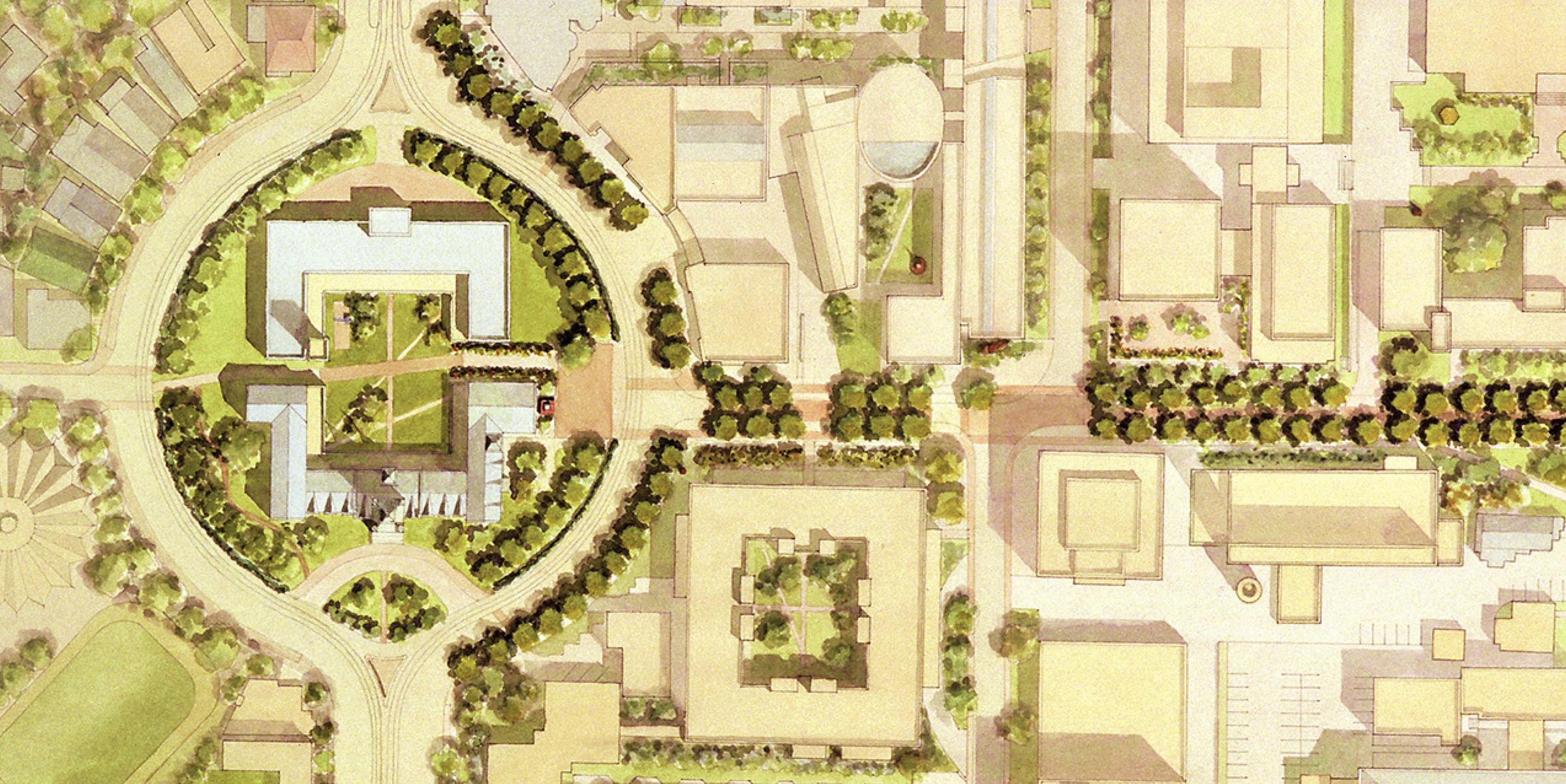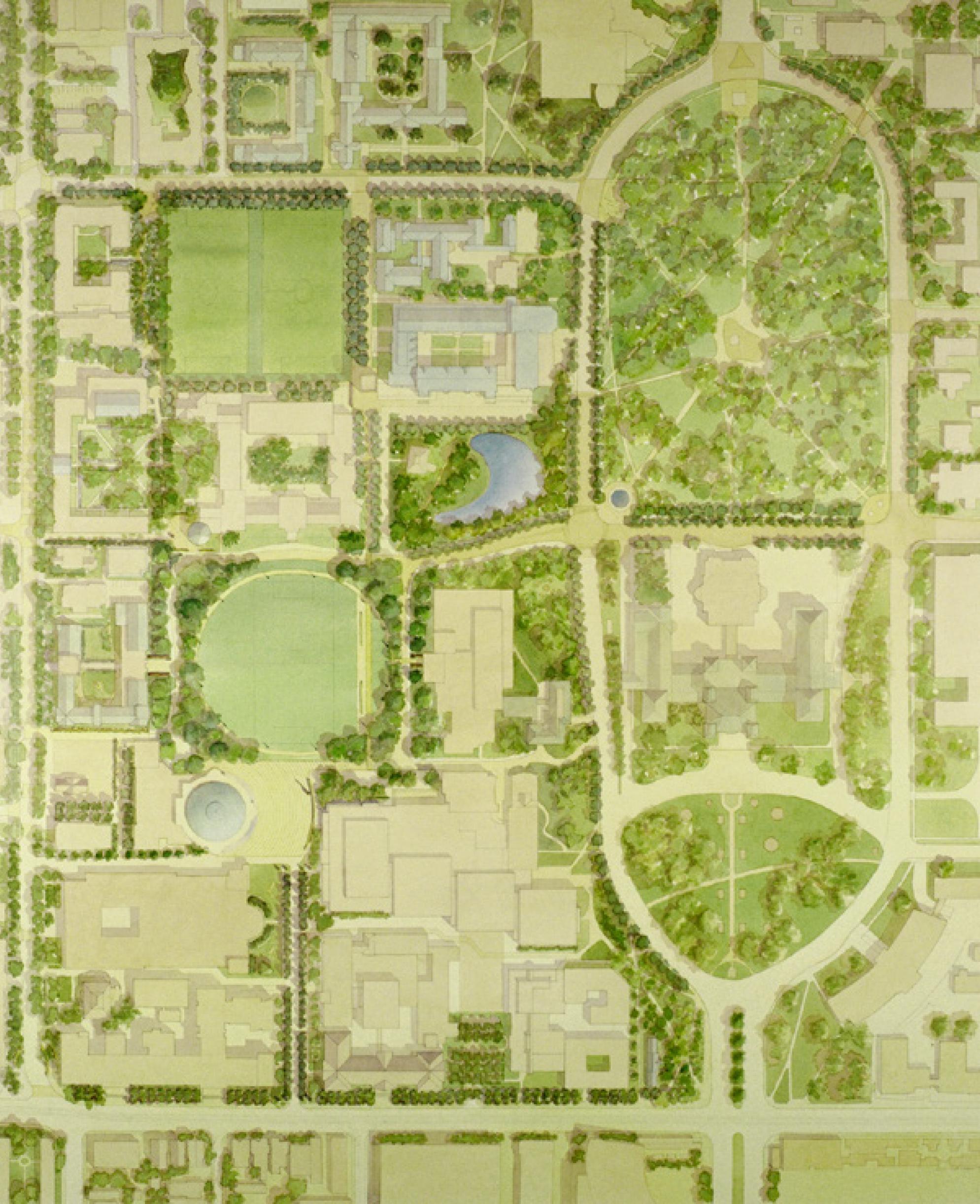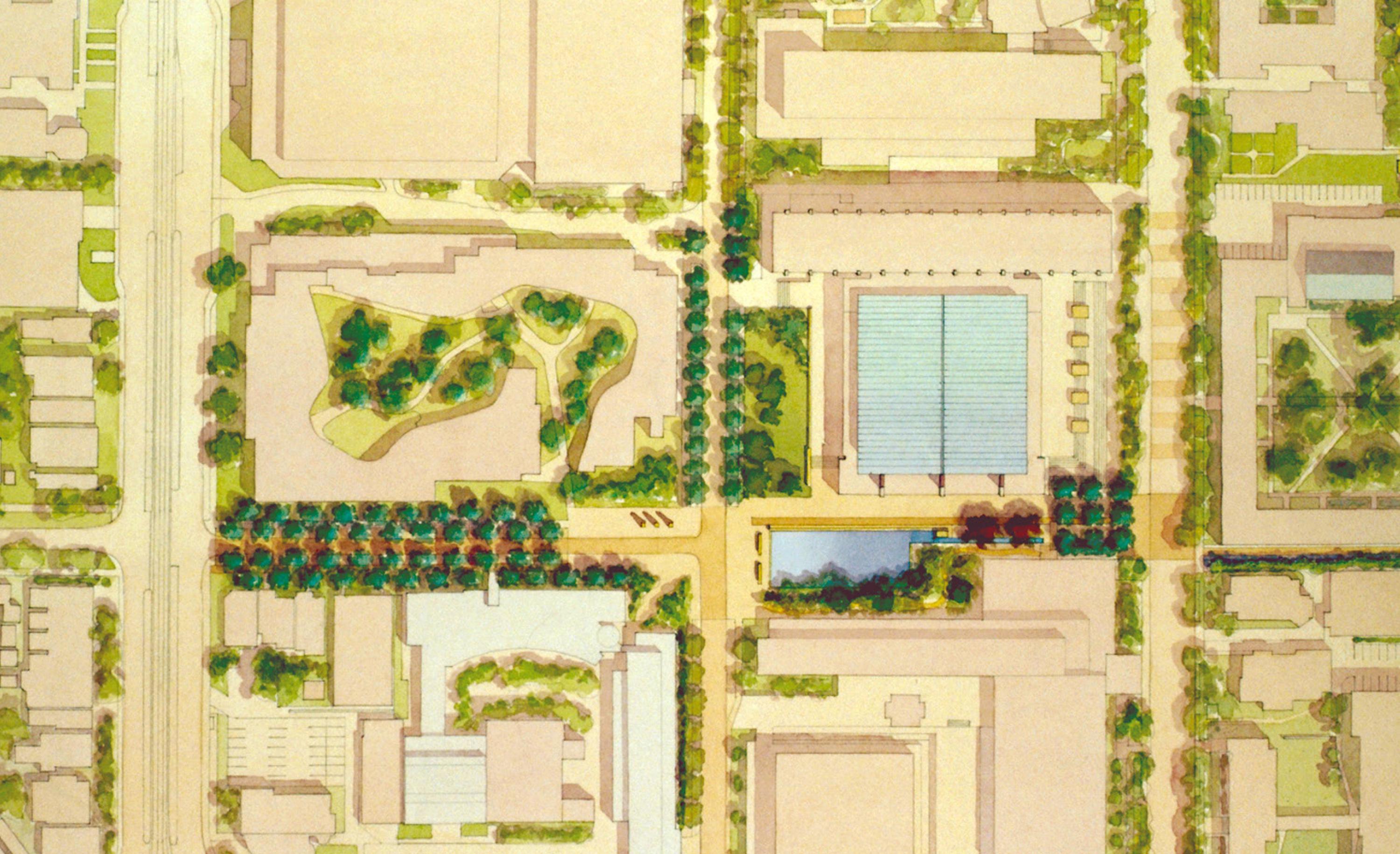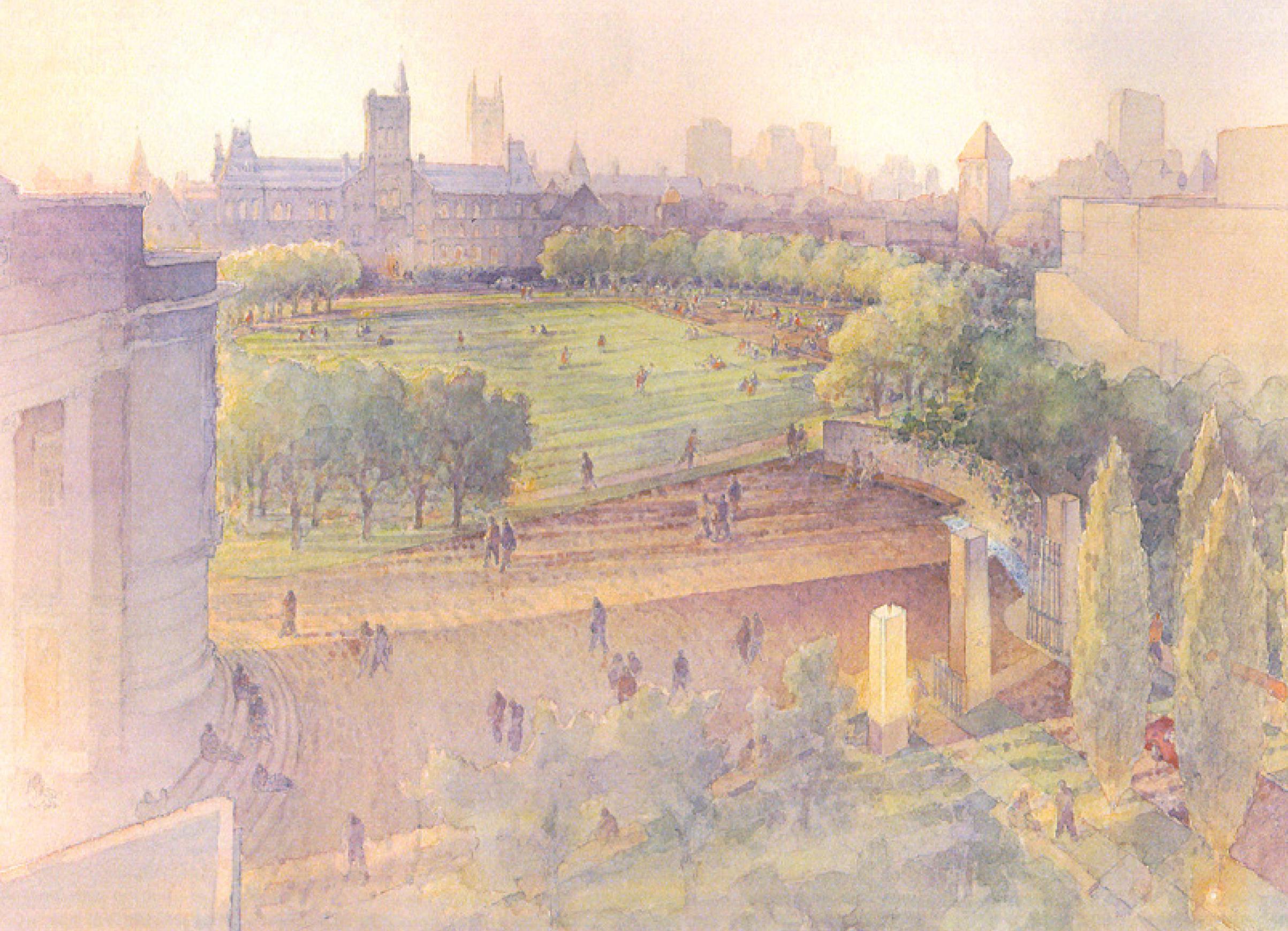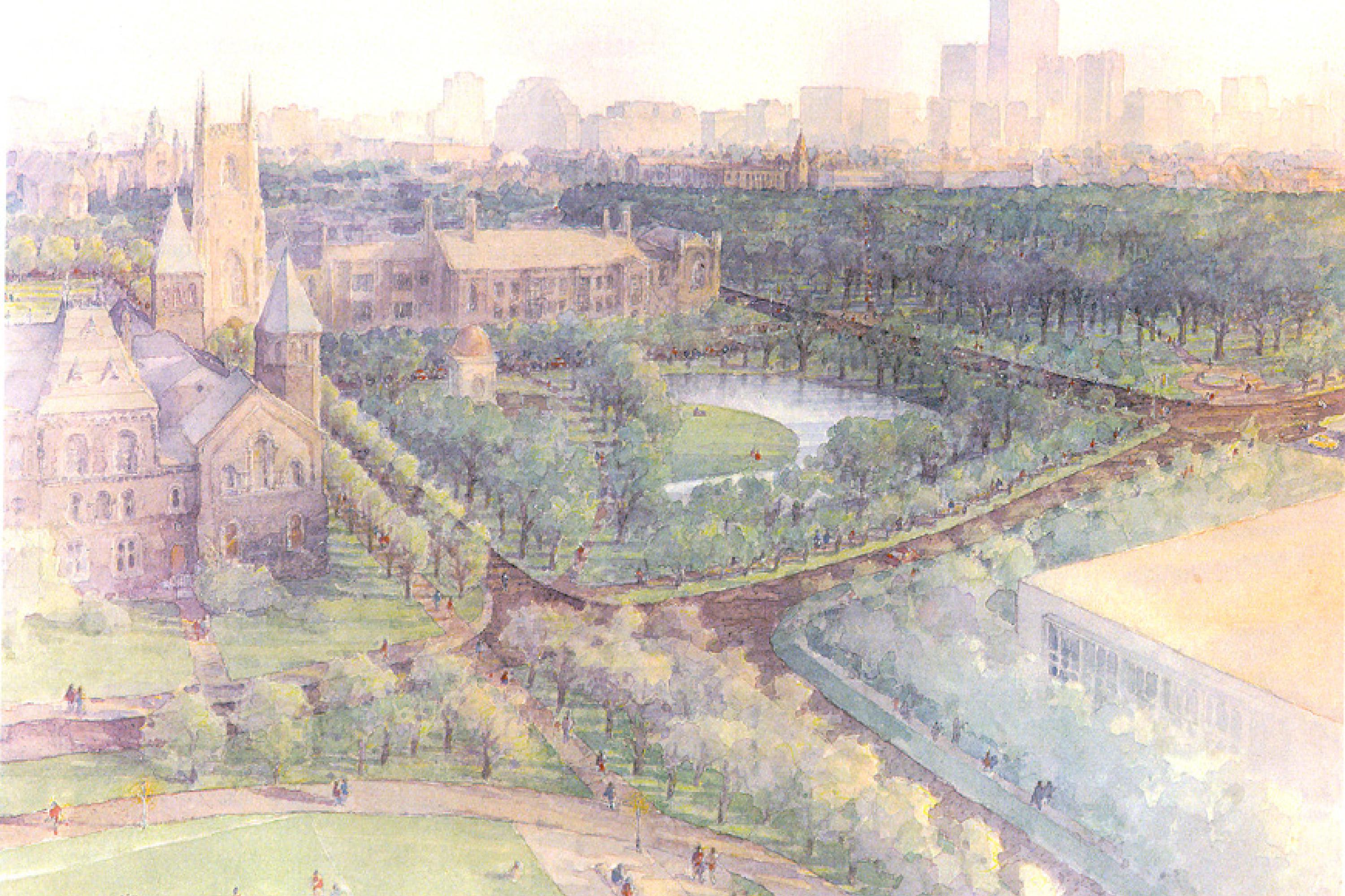This award-winning Master Plan seeks to create a sense of place for the campus and to distinguish it from the surrounding urban fabric, while also recognizing that it is an integral part of the city core. It also aims to re-establish a balance between the pedestrian and architectural elements of the campus and to reduce the volume of automobile traffic. Street design, based on an understanding of the differing character and roles of the various campus corridors, establishes a distinctive University of Toronto presence. Revitalization of a number of academic buildings improves space and enhances connections between the buildings and the streets.
As part of a team, Siamak Hariri consulted with the University community and examined the spaces around and between buildings on campus: the central green spaces, gateways and pathways, and the 20 intersections where the campus meets the city. The resulting Open Space Master Plan recommended specific and detailed revitalization actions to be carried out within a coherent, unifying framework.
2001 – American Society of Landscape Architects, ASLA Professional Awards, Merit Award
2001 – City of Toronto, Architecture and Urban Design Awards, Award of Excellence, Visions and Master Plans
2001 – Canadian Society of Landscape Architects, Professional Awards of Excellence, National Merit

